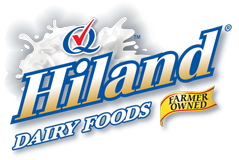Sugar: Adding It All Up
When we think about sugar, we often picture mounds of crystalline white granules, a stack of sugar cubes…and lots of empty calories. And that’s why sugary soft drinks, cookies and snacks have rightfully been put on the ‘watch list’ by many nutritionists, fitness enthusiasts and dietary planners.
Unfortunately, there’s a misconception about sugars in food that, only recently, the FDA has taken steps to alleviate.
‘Sugar’ vs. ‘Added Sugar’
‘Sugar’ is a naturally occurring substance—a carbohydrate, actually—found in most foods. Fruits, vegetables and milk all have sugar. For many people, naturally occurring sugar isn’t a concern, as it is metabolized and processed by the human body differently than ‘Added Sugar.’ (Want to know more? Here’s a good article from the Huffington Post.)
Recently, to help consumers understand the difference between ‘added’ and ‘natural’ sugars, the FDA has proposed changes to Nutrition Fact labeling requirements.
Proposed Changes by the FDA
- In 2014, the FDA issued proposed rules that would identify how much of the total ‘Sugars’ present in food are actually ‘Added Sugars.’ That’s a good start, but this proposal was missing key information such as how much added sugar should the normal person consume.
- Thankfully, in July 2015 the FDA proposed that the label include the percent daily value (%DV) of ‘Added Sugars’ a person should consume (based on a 2,000 calorie per day diet). This important addition will help educate American consumers not only about the difference between natural and added sugars, but also to the fact that they should be watching their intake of added sugars.
Here at the Hiland Home, we applaud efforts to help consumers more fully understand the nutritional value of their foods. We believe these efforts will improve the health, well being and diets of people everywhere and help improve the nutrition of millions of consumers.
And remember, it’s never too late to begin educating yourself about the value of nutrient-rich foods like dairy products, and the need to watch what you eat.
Thank you for signing up!

